Description
The Eye Cape incorporates both three dimensional eyes that pop out and more two dimensional eyes that are ironed onto the cape. The eyes that pop out were made from plastic pouches and foam. We used a small round container to hold the pouch and foam so that it stays in place during the performance. These eyes are also wired to each other using tubes and are coded to pop in and out. These eyes are also black and white. The cape also has colorful eyes ironed onto it. Lastly, we wanted Hunter (our tuba player) to feel comfortable while playing the tuba and thus made him a vest and cape so that it does not distract him while he plays while allowing us to hide the bulky containers on the bottom of it.
Statement of Concept
Knowing the theme of phantasmagoria, we would like to make a scary piece. We thought of eyeballs because they are associated with intimacy for being the vital organ that gives us the most information, but also fear of being watched as symbols of surveillance. The eyeballs were supposed to pop to scare people, but due to the slow inflation, the final effect was more like a mesmerizing show where they emerge and submerge slowly.
After coming up with the pouch-in-bowl design, we realized that each of the bulky eyeballs took up a lot of space under the surface, so a wearable piece needed to be wide and loose enough to accommodate them. A cape was ideal because it had more space, was visible, and large enough to layout multiple eyes, which we finally have 8.
The colored felt eyes were added to decorate the cape and also as a form of distraction from the black-and-white design of the eyeballs. We kept the vest mostly white to keep the audience focused on the cape. However, the colorful eyes were still distracting so we added a black felt ring around each of the eyeballs, and put a small piece of sequin fabric on the pupil as well. This created a nice balance of the magical, disorienting colored yet flat eyes, and the black and white popping eyeballs.
The music we asked our tuba player to play was not any particular piece, but a sinuous melody of a minor key that aroused feelings of uneasiness.
We think the title, Hypnotic Pneumatic Circus, fits our project well.
Making the Eyeballs
Pouch
The pouch is made with two round air pouches stack on top of each other with an opening that connects them.

Initially there were two fittings through the bottom of the pouch, one input and one output, but it turned out that sucking air through the pouch causes the bag to collapse on the fitting, preventing more air to be sucked out from subsequent pouches.
The solution is to use T-connectors and only one fitting.
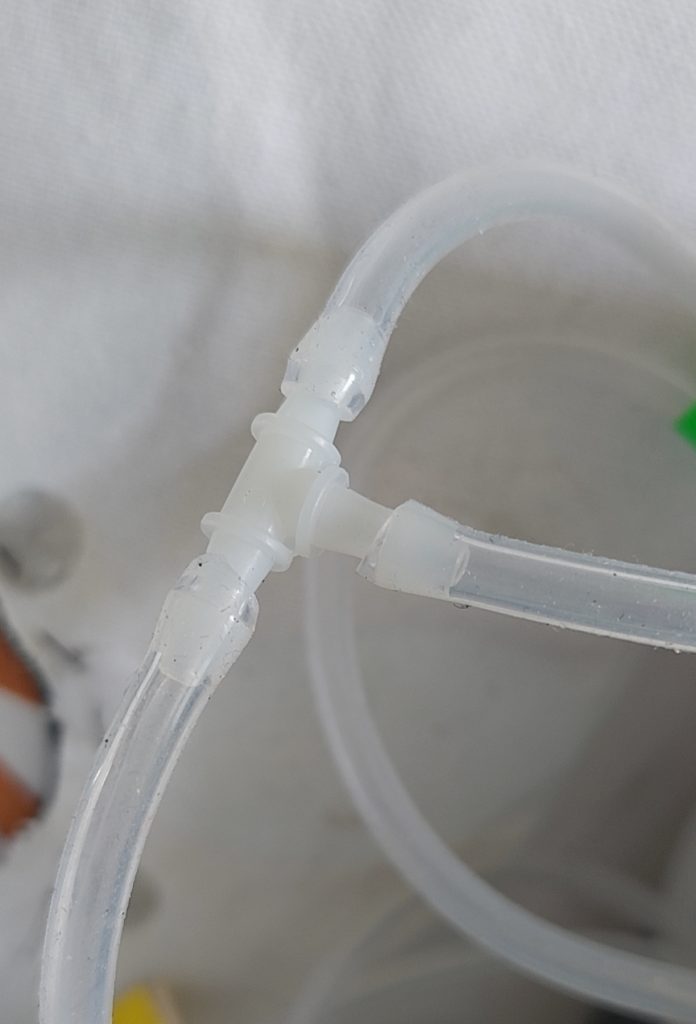
Bowl
We used plastic bowls from soup that comes with boxed lunch to hold the pouches. The bottom of the bow is cut, leaving a rim about 1cm wide.
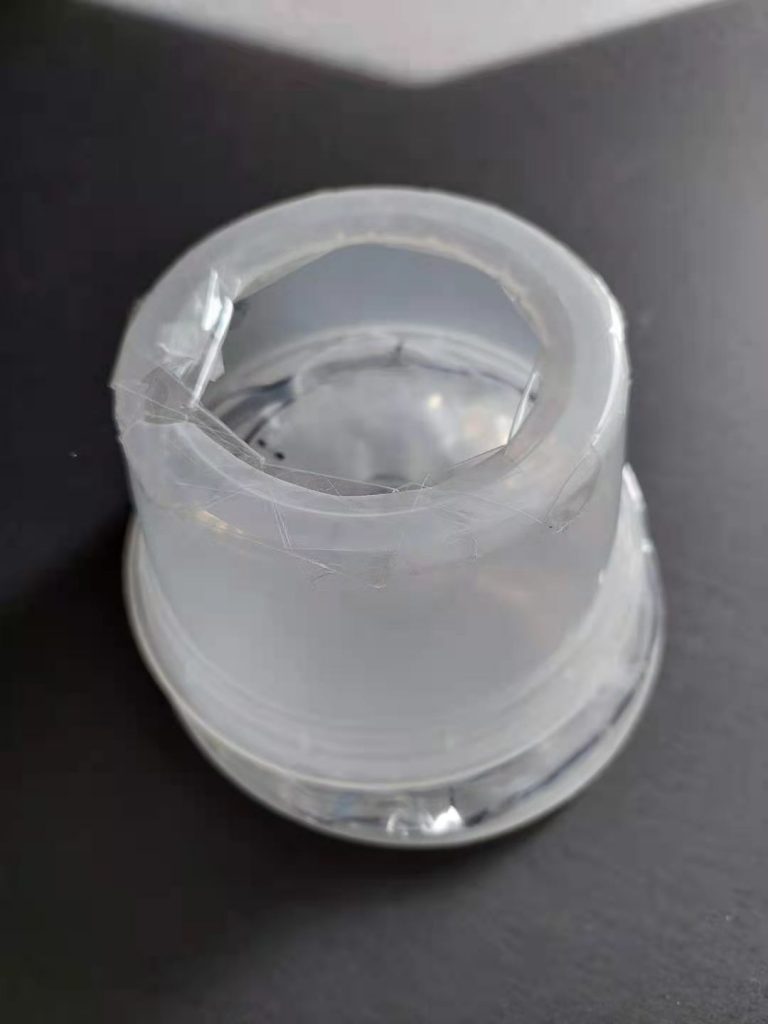
Some of them are then taped to make the edges smoother.
A hole was punctured in the lid of the bowl, and the fitting/tubing goes through the hole.
Foam ball
We carved foam balls to the size that made the top of the ball as high as the rim of the bowl, so that they would not be caught inside the bowl.
One assembled eye
Motor pump
The pumps are programmed such that they inflate the pouches to 70% of the maximum volume, measured by a single pump in seconds. There were three pairs of pumps, one for inflation and one for deflation. Each pair is chained to 2, 3, 3 pouches, respectively.
Final eyeball set in Studio B
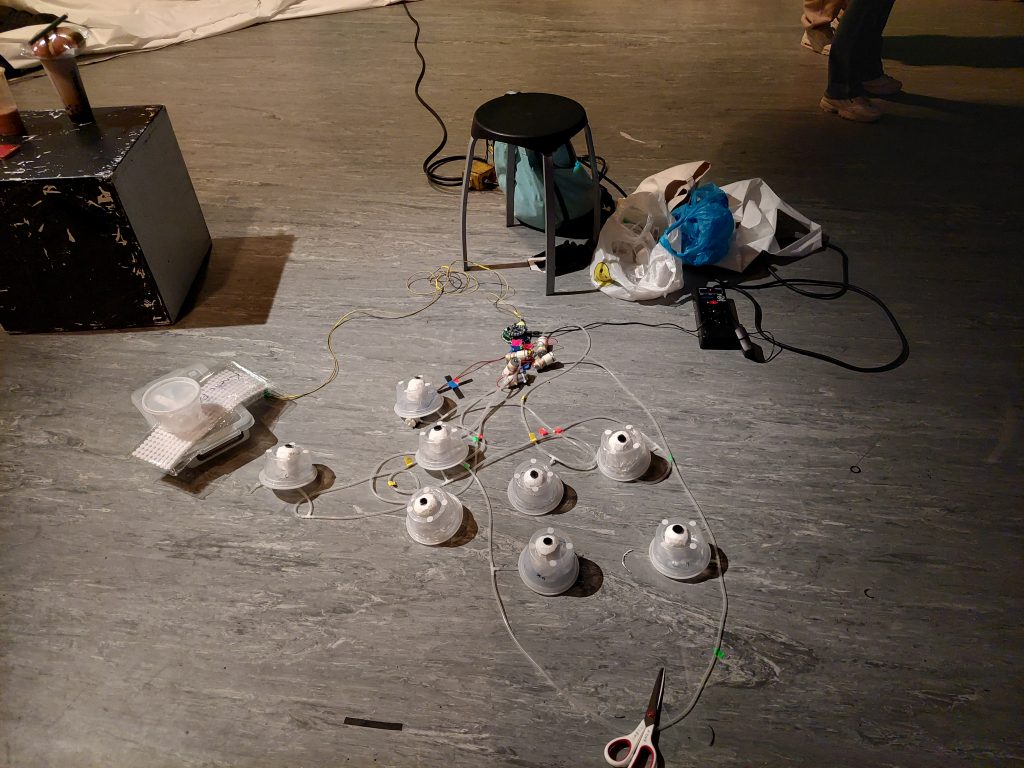
Making the Vest
We always knew we wanted to make a cape. At first, we wanted to tie the cape to the tuba player’s neck area but we quickly realized that it would be uncomfortable and dangerous. We then had the idea to make a vest and sew the cape to the vest. The vest and cape were made entirely out of canvas material and had ironed on felt added to it.
To make the vest, we took measurements of Hunter and used them to make a vest pattern. We then cut the canvas pieces using the pattern.

We then added a collar and a zipper, and we finished off the ends.
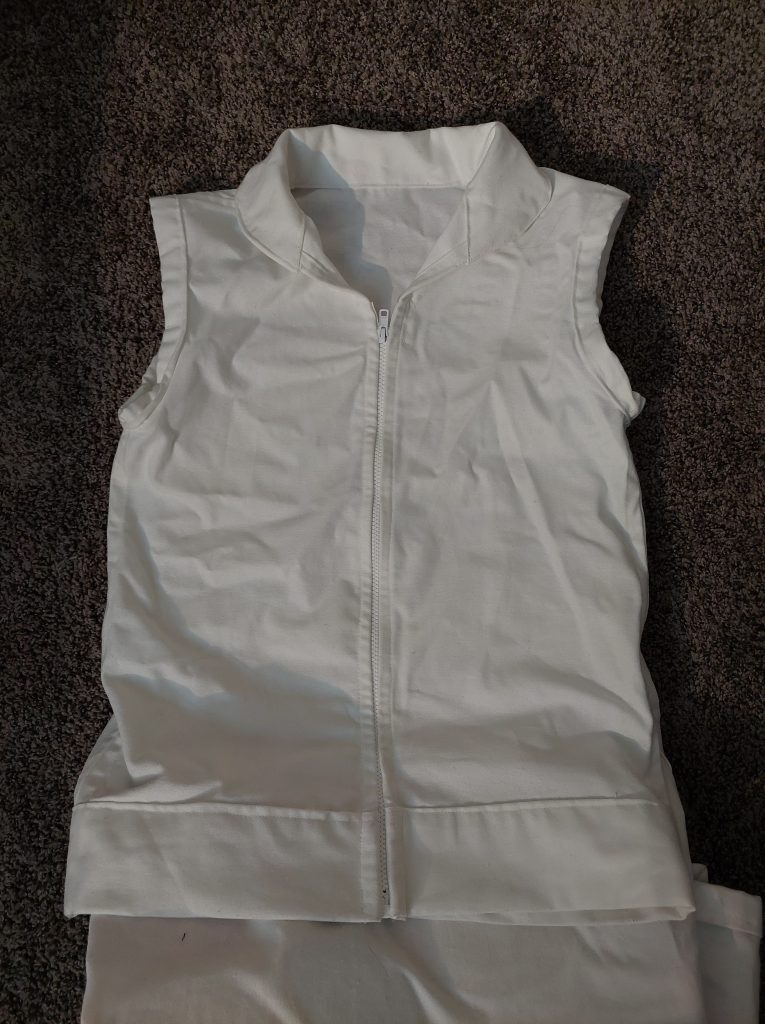
After sewing together the vest and cape, we tried it on to see where to put the placement of the eyeballs that would come out of the cape.
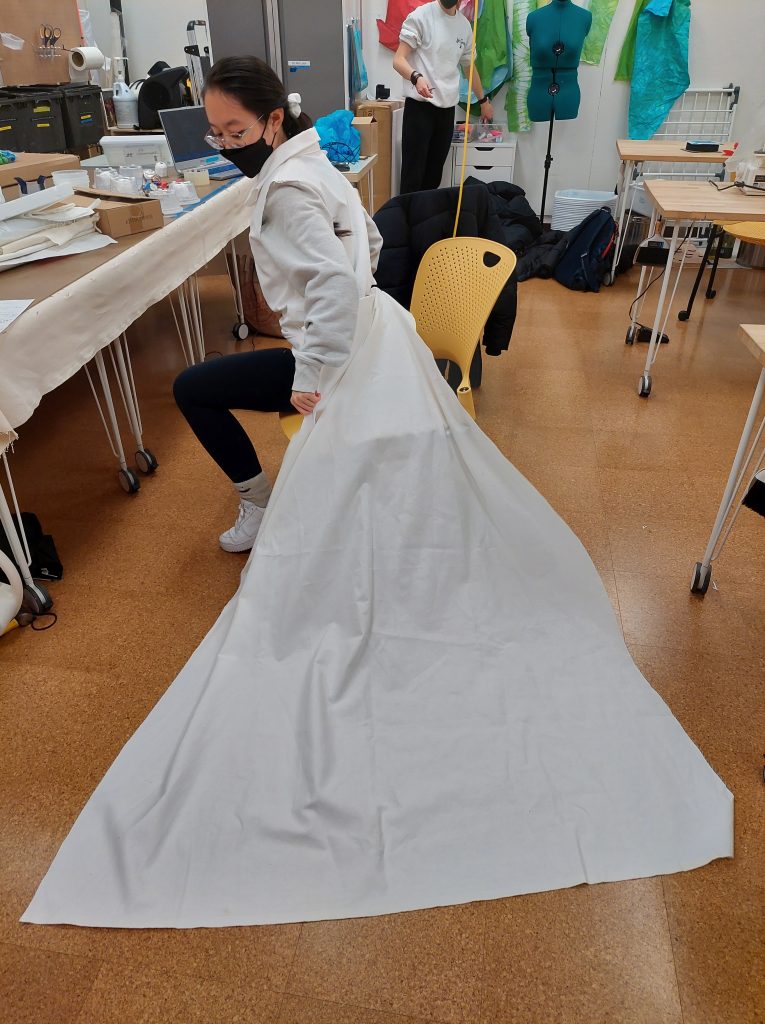
We then cut holes into the cape and took the cake and vest a part to add the felt eyes.
After ironing on the felt eyes, and sewing the vest and cape back together, we added the black rings around the eyeballs that popped out so that they would stand out more from the colorful felt eyes.

Lastly, we decided to add some felt eyes to the back of the vest.
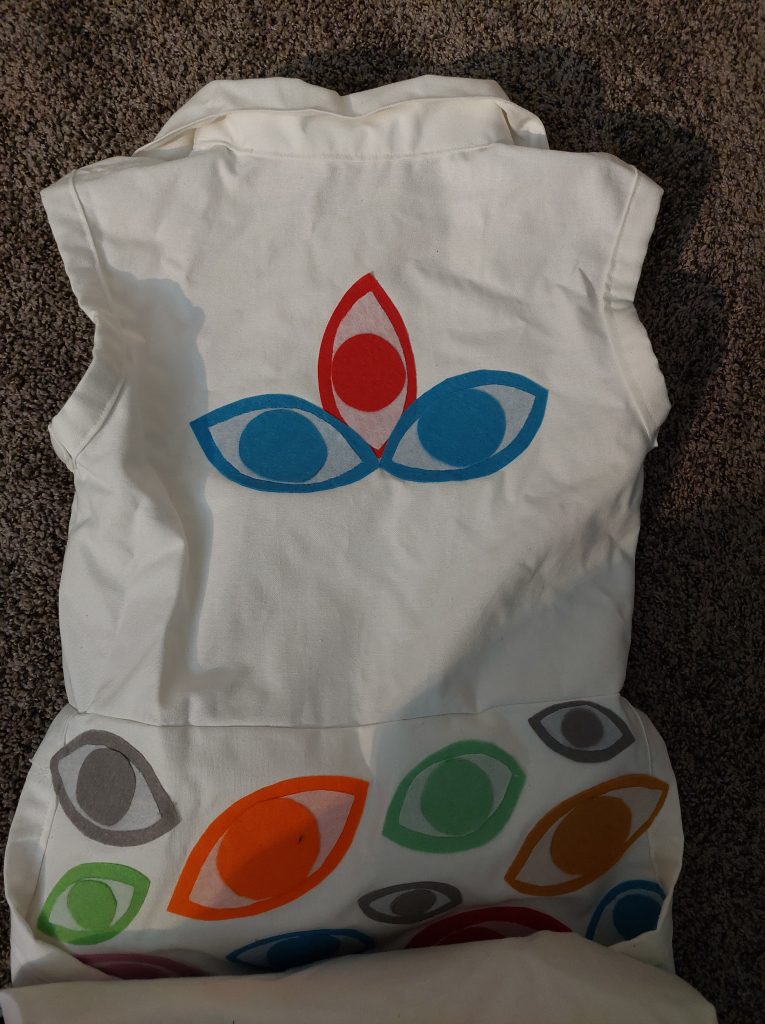
Final Product
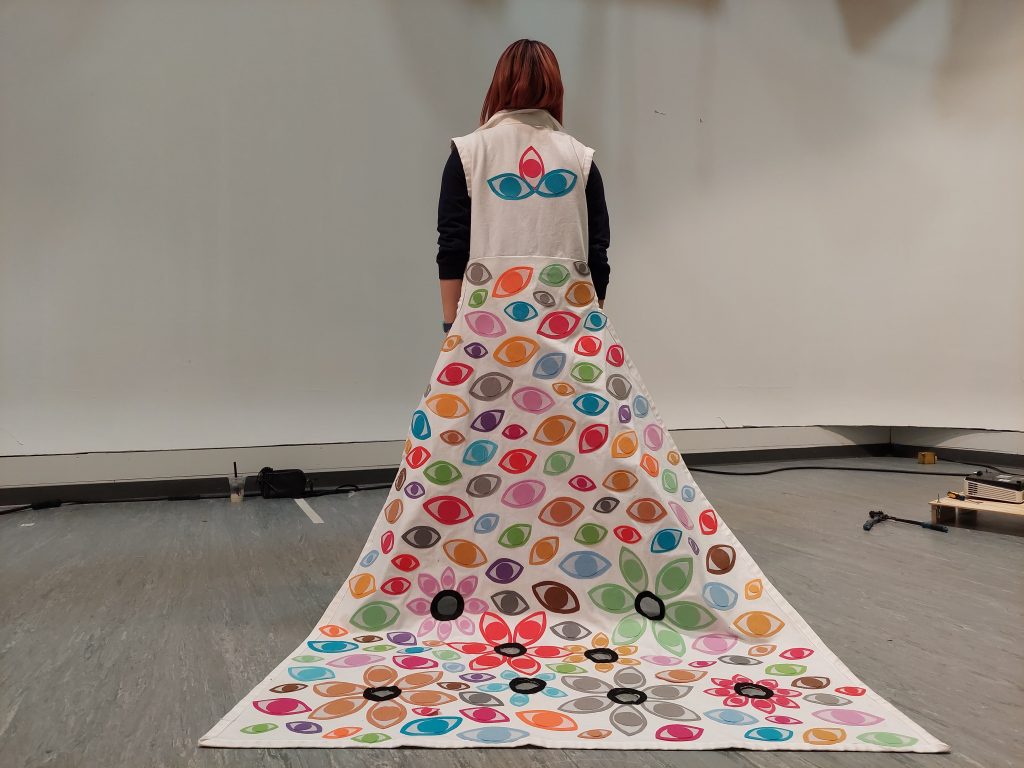
Connection
The bowls of eyeballs are attached to the cape via Velcro stickers.
Successes and Failures
Successes
Overall the performance was a success. During the event, a lot of people enjoyed seeing the eyes on the cape and the eyeballs that popped outwards. We were able to accurately time and take advantage of how long it took the pouches to inflate and deflate. This was important as it allowed us to better control how much air was going into the pouches to ensure they don’t pop. Although we prepared extra pouches and supplies in case the original ones break during testing, we did not end up using them.
The iron-on eyes were also a success. We wanted the cape to be filled with eyes and so we used the iron on material to make colorful eyes. At first, we were worried that the eyes might peel off. We were also worried that it would look weird after adding the felt eyes. But overall, the material worked well and the contrast between the felt eyes and the foam eyes worked well on the canvas cape material.
Failures
We had two key failures. We originally wanted the eyes to be slightly scary and more noticeable. However, because we also wanted to chain three eyes to each other, it slowed down the movement of each eye ball. This caused the effect to be less noticeable. Another failure was that one of the black rings that was around an eyeball did not stick well during the performance. Unlike the iron-on felt material, the fabric used to make the black rings had a peel-off sticky side that allowed it to stick onto the cape. However, because we had to remove the ring multiple times to ensure the hole for the eyes were big enough, it was not really sticky anymore towards the end. We tried to prevent them from falling off by sewing the rings to the cape but one of the rings still came off a little during the performance.
Related Works
Eyestalkers
Eyestalkers is a public installation piece by FRONT404, a Dutch duo of artists consisting of Thomas voor ‘t Hekke and Bas van Oerle. It is a forest of eyes on red sticks that turn and look at passers-by from a shop window.

I found this project similar to our original idea of bringing the paranoia to people about being watched, and it actually realized the effect of looking at people, which our slow pneumatic approach wouldn’t be able to do.
Resin Monster Eyes
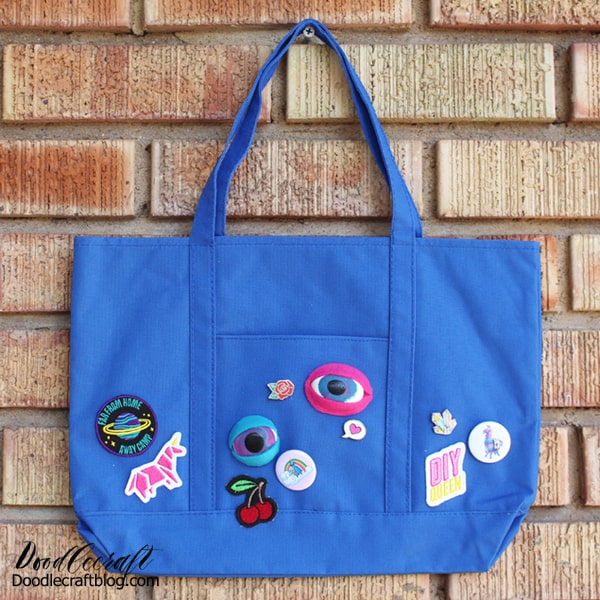
https://www.doodlecraftblog.com/2020/08/resin-monster-eyes-perfect-for-costumes.html
We wanted to add fake eyes onto the cape and looked for inspiration of how to design them. This is one of the websites we visited for inspiration on felt eyes.

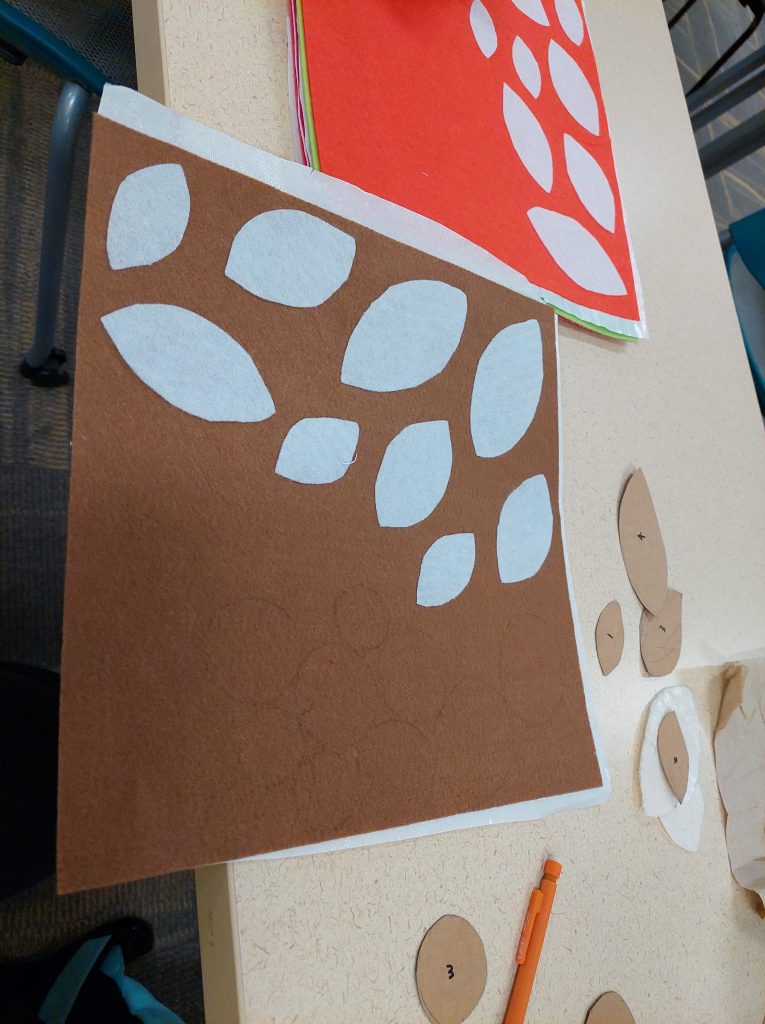
Leave a Reply
You must be logged in to post a comment.